Article's Content
2023 was another pivotal year in the SaaS news space (is there any other kind?).
The tech landscape is constantly being reshaped by groundbreaking advances, strategic acquisitions, and increasing regulatory pressure from governments around the world.
At the forefront of this transformation is the emergence of generative AI, with OpenAI leading the charge. Its advancements have not only sparked widespread interest but also raised important discussions about the future of AI in our personal and professional lives.
The attention given to AI has overshadowed developments in other tech niches—major acquisitions. Companies like Atlassian, HubSpot, and Semrush have made significant moves, while others like Adobe have been blocked.
Adding to the mix, Google’s algorithm updates throughout the year have kept digital marketers on their toes, underscoring the importance of adapting to the ever-evolving SEO landscape.
This blog post goes into each of these stories, exploring how each development is a piece of the larger puzzle in the rapidly changing world of technology. Here’s what we’ll take a look at:
- HubSpot Acquires Clearbit
- Atlassian Acquires Loom
- Meta Launches Threads
- OpenAI Launches Plugins, API, and More
- Semrush Acquires Traffic Think Tank
- OpenAI Drama + Implications
- Google + Meta Ban News in Canada
- Google Algorithm Updates
- Adobe and Figma Abandon Merger
Alright, let’s dive into the first big SaaS news story of 2023.
HubSpot Acquires Clearbit
In a great strategic move for the leading CRM platform, HubSpot announced its agreement to acquire Clearbit in November 2023. The reportedly $150 million acquisition isn’t just a chance to capture information from the leading B2B data provider; it’s a play to strategically enhance HubSpot’s competitive intelligence and AI capabilities going forward.
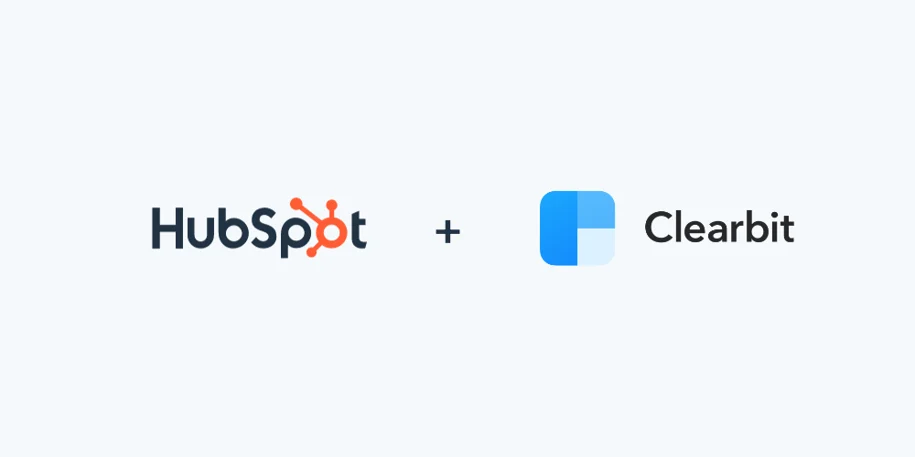
Clearbit gathers over 100 firmographic, demographic, and technographic data points from public repositories, proprietary data sets, and other sources. It’s this substantial collection that helps businesses pinpoint prospects and decode purchase intent. Well, it’s now the property of HubSpot.
The potential of this integration promises to redefine the landscape of customer data intelligence. Naturally, the tech community has been abuzz about this merger, anticipating the fusion of such a large database with HubSpot’s powerful CRM:
Salesforce did everything it could to buy LinkedIn, it just couldn’t quite afford it. Benioff said it was the most strategic thing they could buy.
HubSpot now buys Clearbit
Not exactly the same, but somewhat similar
Smart way to turbocharge a $500m+ CRM business
— Jason ✨Be Kind✨ Lemkin 🇮🇱 (@jasonlk) November 1, 2023
Why it Matters:
From a strategic perspective, the acquisition is set to be a game-changer for both HubSpot and its users. The company can use Clearbit’s data to improve its customer intelligence capabilities, opening it up to a new SaaS niche and expanding its total addressable market.
For marketing, sales, and support teams, insights from this enriched data will help tailor content and conversations to resonate more deeply with their leads and customers, elevating their go-to-market strategies to new heights.
Atlassian Acquires Loom
Atlassian officially acquired Loom, the asynchronous video messaging platform, for a staggering $975 million this year. That’s quite a discount from Loom’s peak valuation of $1.5 billion after its Series C in 2021, at the peak of demand for this type of hybrid-work platform. Atlassian recognizes that Loom is still an invaluable asset, one that can facilitate collaboration within its other renowned tools like Jira and Confluence.
While Loom will continue to operate as a standalone product, Atlassian’s integration plan for Loom envisions using asynchronous visual communication to enhance various aspects of team interactions.

This integration aims to blend Loom’s video messaging prowess with other communication forms, such as text and presentations, creating a versatile and comprehensive collaboration environment. Users can now log issues in Jira through video, employ videos for large-scale internal communication, or add a personal touch to client updates with video messages.
Why it Matters:
From a strategic standpoint, Atlassian sees asynchronous video as a key evolution in team collaboration—especially considering the rise in remote and hybrid work. The acquisition of Loom aligns perfectly with the growing trend of distributed workforces and the need for effective tools to work efficiently across geographical locations and time zones.
This integration is expected to add rich context to various workflows and is set to be further enhanced with AI investments. The focus is on creating smooth transitions between video, transcripts, summaries, documents, and workflows derived from the seamless interplay of these mediums.
Meta Launches Threads
2023 witnessed a striking development in the tech industry, with Meta unveiling Threads, a new social app crafted by the Instagram team. Threads is a text-focused platform for real-time updates and public conversations using threads. It’s also a great way to gain market share in light of (Twitter) X’s significant missteps and continued downward spiral.
Essentially, it’s Meta’s attempt to take over the digital town square—and it appears to be working.

Designed as a direct competitor to X, Threads emphasizes text-based sharing. The app is an extension of Instagram that provides an array of features, including:
- A feed where users can view threads, create their own, and interact with other followers
- A keyword-based search feature and explore pages to find accounts of interest
- The ability to edit photo and video alt text descriptions before posting
- Dynamic posting options, including the use of GIFs, Polls, and customizable response controls
- The ability to share Threads content directly to a user’s Instagram DMs
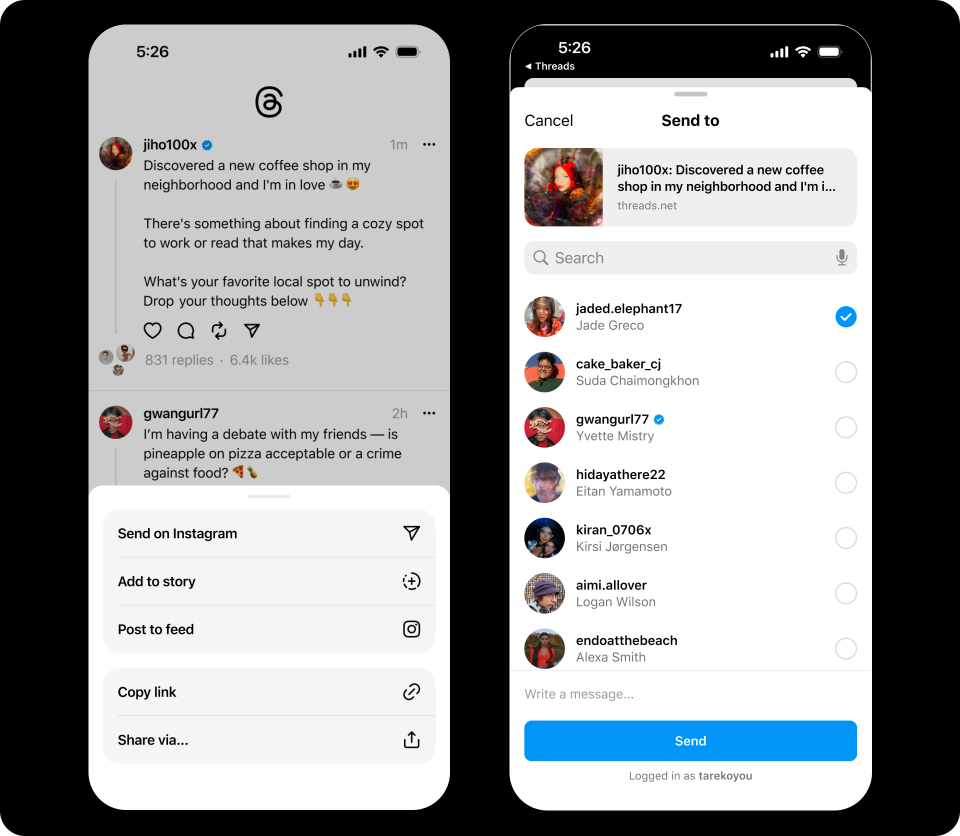
Why it Matters:
Despite the hype, the growth of Threads has slowed dramatically since taking just five days to reach 100 million users, and reports suggest it’s struggling to maintain daily active users. According to SimilarWeb, Threads users spend about three minutes a day on the platform, while X users are on the platform for around 20 minutes. This means rumors of X’s demise are likely exaggerated (despite Elon’s best efforts to get it there).
Whether it’s out of habit or loyalty, it seems like people aren’t quite ready to abandon their preferred social platforms. Most of the major tech companies, influential figures, and journalists still use X regularly. That said, Threads will be an important channel for SaaS marketers to monitor as we move into 2024.
OpenAI Launches Plugins, API, and More
If one company dominated the SaaS news headlines in 2023 more than any other, my bet is on OpenAI. The company has continued to blaze trails in the AI industry, unveiling a series of innovative features and enhancements to its platform and further cementing its position as a leader in the AI domain.
Here’s an in-depth look at these key developments:
ChatGPT Plugins, Browsing, and Code Interpreter: The introduction of ChatGPT plugins marks a significant enhancement in the model’s functionality. Other brands and third-party developers have contributed hundreds of plugins to the ChatGPT Store—including names like Instacart, Kayak, and Klarna. The company also released a Browsing model that lets users access current information from Microsoft’s Bing search engine through the ChatGPT interface, as well as one that helps developers interpret code.
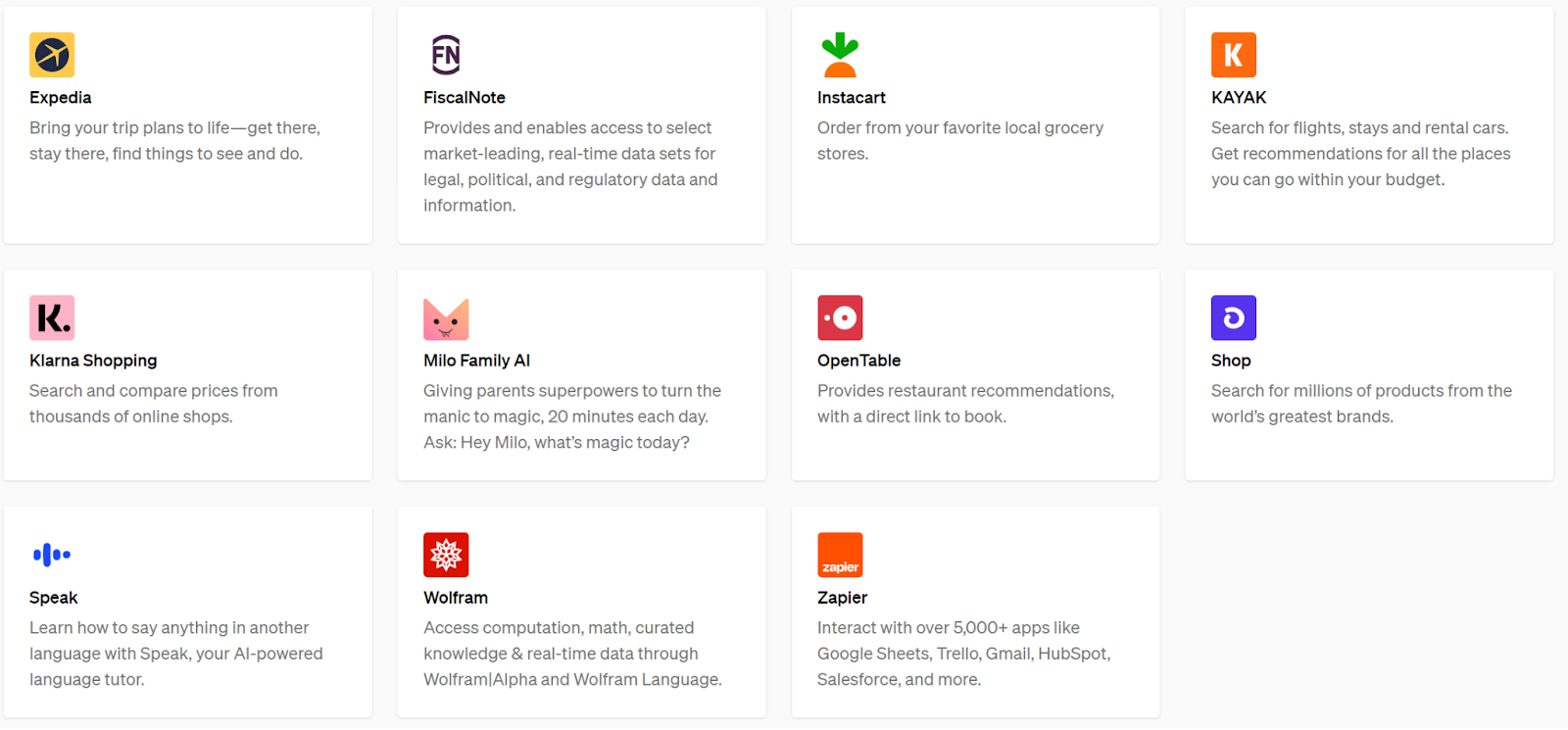
Customizable ChatGPT (GPTs): OpenAI also introduced the ability for users to create custom versions of ChatGPT, aptly named GPTs. These customizable models let you infuse specific instructions, additional knowledge, and diverse skills to serve varied purposes. Whether it’s for daily assistance, work-related tasks, or educational purposes, these GPTs are designed to be user-friendly, allowing users to create task-based assistants without the need for coding skills.

Native Release of DALL-E 3: OpenAI built the latest iteration of its text-to-image generation tool, DALL-E 3, into ChatGPT and has also released it through the Bing Image Creator. That means millions of people now have the ability to create stunning imagery simply by using prompts.

Why it Matters:
Collectively, these developments by OpenAI are not just incremental improvements but represent significant leaps in AI capabilities. They offer enhanced customization, flexibility, and practical utility for a wide array of users, from casual enthusiasts to professional developers.
Moreover, these advancements reflect OpenAI’s dedication to pushing the boundaries of AI applications while maintaining a strong commitment to safety and ethical standards in AI development and usage.
Semrush Acquires Traffic Think Tank
This year, leading SEO platform Semrush announced its acquisition of the highly regarded marketing education company Traffic Think Tank (TTT). This acquisition stands as a notable event in the digital marketing and SEO industry of 2023, marking a confluence of expertise and resources aimed at enhancing marketing education globally.
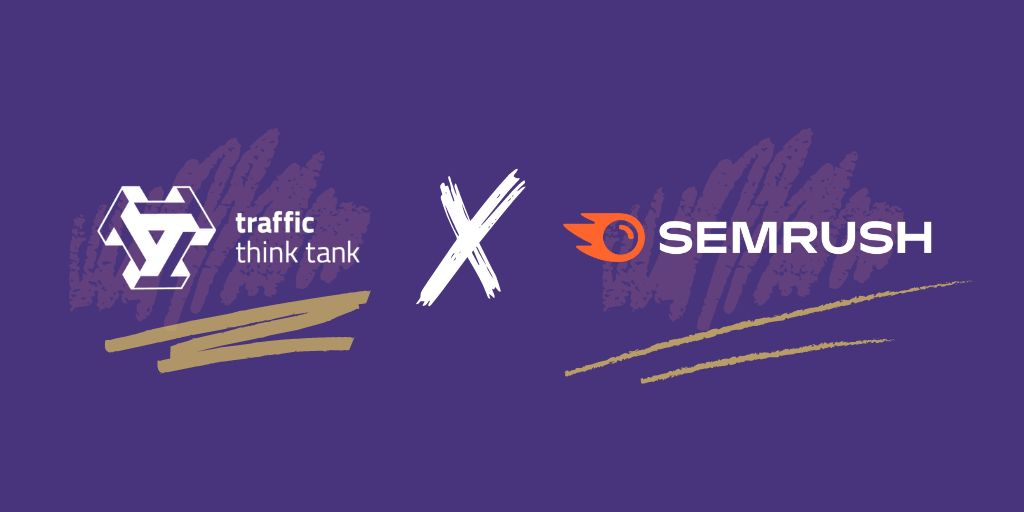
Founded in 2017, Traffic Think Tank quickly blossomed into a thriving community of marketing professionals. Today, it boasts the following:
- Over 300 hours of premium content from more than 90 industry experts
- Thousands of members in its private Slack community
- An active community that posts 10,000+ messages across channels monthly
The platform has been instrumental in providing real-time Q&A sessions with top industry experts, fostering a dynamic and interactive learning space.
Why it Matters:
The marriage of Semrush’s resources with Traffic Think Tank’s expertise and content is anticipated to create unparalleled training and development opportunities for marketers around the world. With TTT under its umbrella, Semrush now boasts a library of top-tier marketing education content it can use to support existing customers and bring in new customers.
Not to mention, it also gets over a million dollars in ARR from the academy subscriptions alone!
We saw Semrush gain tons of valuable SERP real estate and hundreds of thousands of organic visits when it scooped up Backlinko back in 2022. With the acquisition of TTT, the SEO company can hitch its brand wagon to one of the biggest communities of expert marketers out there. That’s a massive boost in brand authority.
OpenAI Drama + Implications
Despite its widespread popularity and technological breakthroughs, OpenAI’s nearly rocket-like rise during 2023 almost came crashing down in November. The company board had decided to oust its CEO out of the blue, kicking off a dramatic week of rumors and behind-the-scenes discussions—many of which we’ll likely never know about.
Here’s a quick (and rough) recap of the story:
- The board of directors of OpenAI (a non-profit entity) decided to fire CEO Sam Altman
- Co-founder Greg Brockman quits the company, and many top OpenAI employees threaten to do the same
- Investors are reportedly upset over the dismissal of Altman and the board’s decision-making
- Altman, Brockman, and ex-OpenAI employees are promised jobs at Microsoft
- There is a shakeup of the OpenAI board, and Sam Altman is reinstated as CEO
Amidst this internal turmoil, Microsoft, a long-standing partner of OpenAI, made a strategic move. Altman and co-founder Brockman were appointed to spearhead a new AI research lab at Microsoft. This development underscored Microsoft’s deepening commitment to AI research and its ongoing partnership with OpenAI, a collaboration that has been instrumental in shaping the AI landscape.
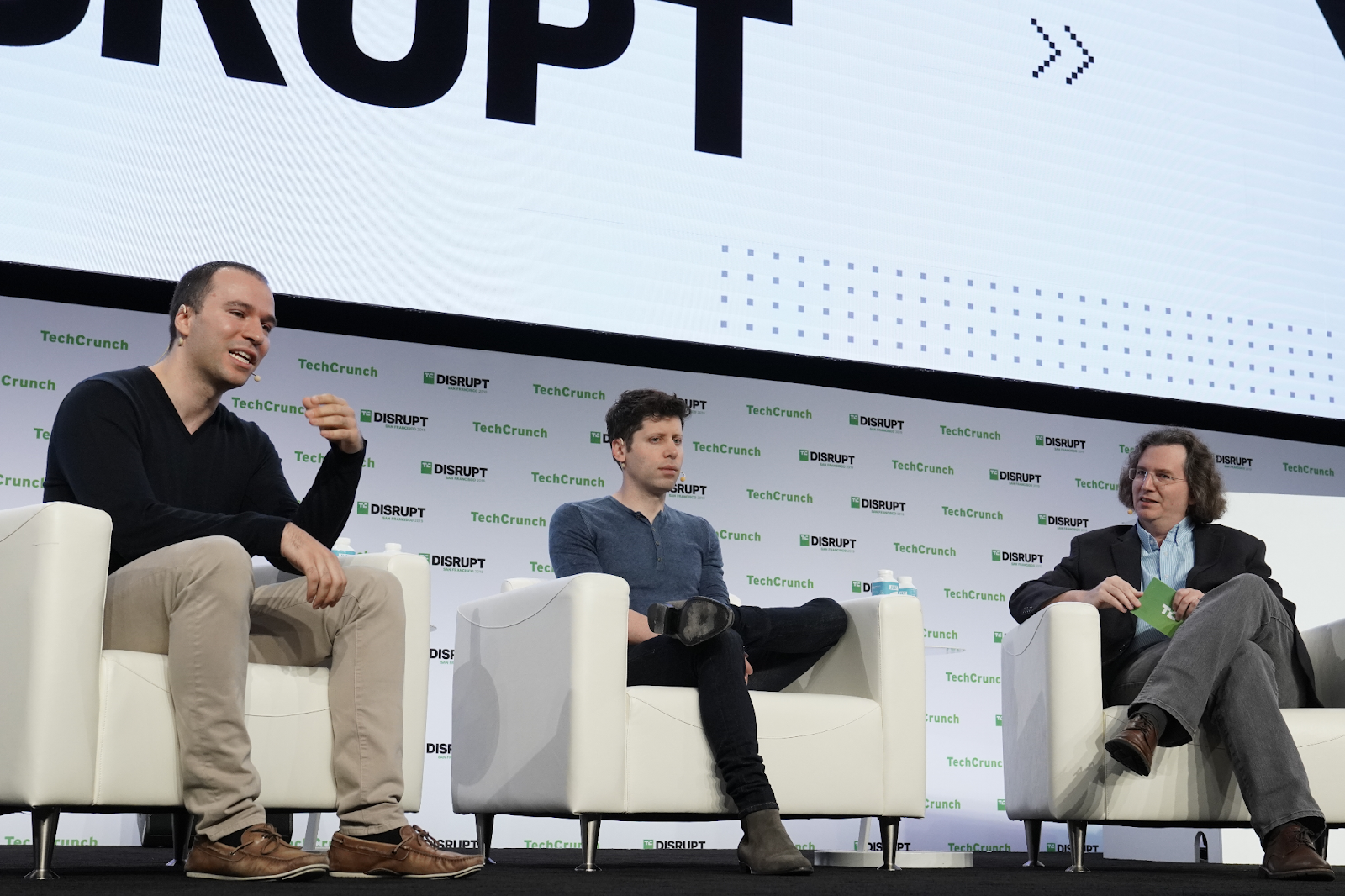
For the millions of ChatGPT users and other OpenAI customers, this likely comes as a relief. The industry-leading company will continue forward with the leadership and talent that produced ChatGPT, DALL-E, and its other groundbreaking tools. But there are some other important considerations from this fallout.
Why it Matters:
It shows how competitive the new AI industry is at the moment. The departure of that much talent would have opened the door wide for the likes of Anthropic, Cohere, and other OpenAI competitors to catch up. It shows that talent is a key resource that’s in short supply for model developers and other large tech brands looking to build out AI capabilities.
As other brands look to slug it out for a spot in the AI limelight, it will be interesting to see how companies leverage leadership, brand, and product.
Google + Meta Ban News in Canada
Although we have team members from around the world, we’re a Canadian company at heart. One of the biggest tech news stories of 2023 for us was the developing situation between major tech giants and the Canadian government — mainly the dispute between the Canadian government and Google and Meta.
The crux of the dispute centers around Bill C-18, the Online News Act, which mandates internet companies to compensate Canadian news publishers for their content. The government argues that Google and Meta owe compensation to the news publishers whose content brings traffic to social platforms and search engines.
In response, both companies threatened to block Canadian news from their platforms due to “uncapped financial liability.” While Google has reached an agreement with the Canadian government to pay out $100 million to news companies, Meta followed through on its promise.
For people in Canada, news pages across Meta platforms look something like this:
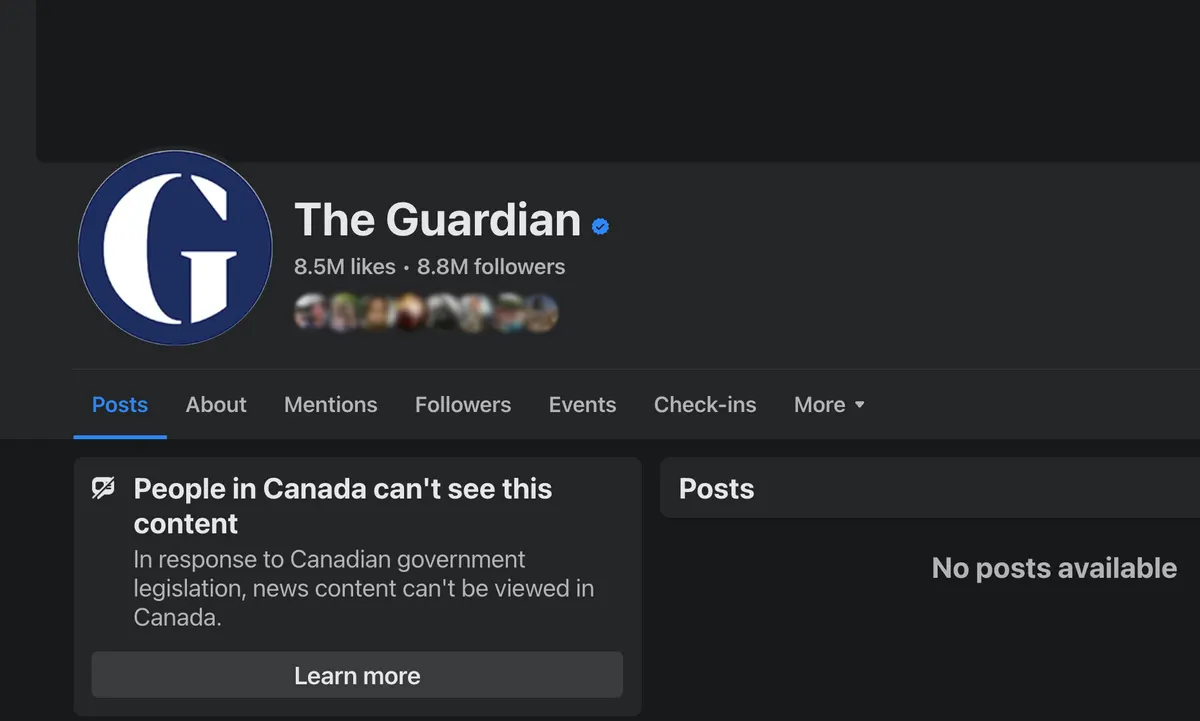
Why it Matters:
As governments worldwide grapple with the evolving digital landscape, they have to contend with the impact that social media, AI, and other technologies have on the wider population. The conflict between Google, Meta, and the Canadian government represents a significant moment in the ongoing discourse around the relationship between big tech and government regulation.
The Canadian situation underscores the need for a balanced approach that respects both the rights of content creators and the operational realities of tech platforms. This scenario in Canada could potentially influence future global policies on content compensation and the distribution of news on major internet platforms.
Google Algorithm Updates
Another year, another handful of major updates to Google’s search engine algorithm. For SEOs and other marketers, keeping track of the constant changes to the inner workings of the world’s largest and most popular search engine is a tall task.
According to Google’s Search Status Dashboard, there were nine major updates in 2023 alone. Four of these were “core updates” that represent significant changes to the algorithm:
March 2023
August 2023
October 2023
November 2023
Not every update comes with an explanation by Google about how it will impact web rankings specifically. Occasionally, we get insight into the algorithm changes and how to navigate them, like last year’s helpful content update, but that’s an infrequent occurrence.
Why it Matters:
Tracking SERP positions post-Google core updates is crucial due to the significant impact these updates can have on website rankings and traffic. Core updates typically involve substantial changes to Google’s ranking algorithms, leading to considerable fluctuations in website visibility.
According to Semrush, the March and October updates caused notable spikes and dips in web traffic, highlighting the volatility introduced by these broad algorithmic adjustments.
In contrast, the August 2023 update did not trigger such pronounced traffic changes, potentially due to its more targeted nature or because websites had better adapted their SEO strategies by then.
In short—monitoring your SERP position after these changes is essential. Knowing when a drastic change is due to a recent update or not can help you make a more informed decision about how to optimize and recover.
Adobe and Figma Abandon Merger
In early fall 2022, Adobe’s announcement to acquire the well-known design platform Figma sent ripples through the design and SaaS communities. The planned $20 billion acquisition sparked mixed reactions, with some expressing excitement and others dismay. This significant deal was set to transform the digital design tool industry.
However, statements from Adobe and Figma revealed their decision to call off the acquisition, entailing a $1 billion compensation from Adobe to Figma.

The proposed merger encountered substantial challenges as regulatory authorities in the UK, EU, and US raised concerns about its potential to hinder competitive balance in the digital design sector. Despite both companies contesting the regulatory conclusions that depicted Adobe as having near-monopoly status in the design arena, the agreement was ultimately terminated.
With the calling off the deal, Adobe is compelled to revisit and possibly redefine its expansion strategy. For a company with such a massive store of resources (and a substantial SEO moat), it should be able to switch focus quickly to internal development or alternative acquisition opportunities. Figma emerges from this situation retaining its independence, yet continues to face stiff competition from major industry players like InVision, Miro, and Adobe itself.
Why it Matters:
The Adobe-Figma merger points to an increasing trend of regulatory scrutiny, particularly concerning acquisitions involving major tech companies. There are many different ways this could play out for the industry.
On the one hand, we may see more acquisitions between SaaS companies and educational content brands like Traffic Think Tank. For bigger companies, it may be a smarter play to acquire a content moat than to build one internally. On the other hand, we might see a chilling effect on the blockbuster mergers involving the biggest tech companies.
Stay Up to Date on the Most Important SaaS News Stories in 2024
Breaking news in the SaaS space seems to occur on a daily basis. Of course, not everything will be relevant to your niche, brand, or department, but it’s important to keep a finger on the pulse. It’s difficult to keep up with everything from AI to the latest marketing strategies, but we have you covered.
Sign up for the Foundation Newsletter and stay ahead of the curve in 2024.







